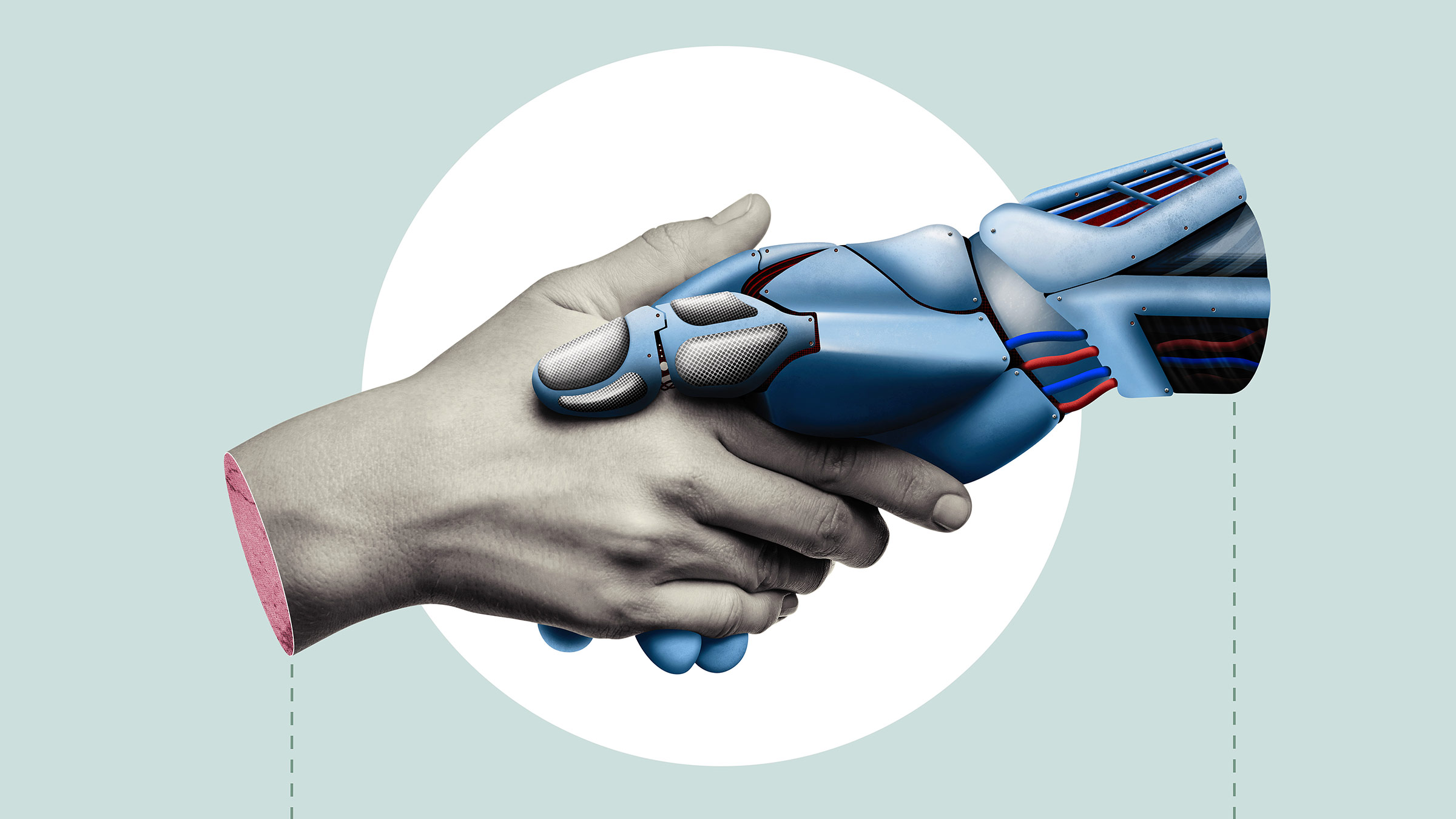Middle managers are receiving pressure from their leaders to spend more time developing and coaching their direct reports. The pressure is also coming from below, as employee expectations have risen for real-time, personalized feedback, particularly among those early in their careers or who were onboarded remotely.
The challenge is satisfying these demands without incurring even higher levels of middle manager burnout and stress. Based on our research and advisory work, we foresee new AI tools making it easier for managers to provide high-quality coaching more efficiently.
Employees want more coaching, but managers are out of capacity
O.C. Tanner’s 2023 Global Culture Survey found that leaders whose supervisory responsibilities — including training employees — had increased over the past year showed a 21% higher rate of anxiety, which increased the odds of burnout by a staggering 520%.
Despite the potential for overload, managers generally want to coach their employees because they know it’s beneficial. In fact, managerial coaching has been shown to increase job satisfaction, knowledge sharing, and performance — all outcomes that organizations (and managers!) want.
The AI opportunity
Our review of the field indicates that AI-based managerial coaching is not yet commonplace, so we offer two case examples to demonstrate how it might work in your organization:
Eleos Health
Eleos Health is a behavioral health technology company that Katherine studied in depth as part of her ethnographic research. The Eleos platform uses HIPAA-compliant software to record and analyze conversations between therapists and clients. In addition to saving time for therapists in note-taking, the platform’s AI automatically identifies relevant evidence-based techniques and summarizes key moments in conversations between therapists and clients.
One therapist explained: “After each session, the Eleos platform analyzes the counselling techniques I used and provides a helpful summary. This gives me a great sense of where I left off with that patient and what interventions I should use next time to best help them.” In this way, the AI platform enables therapists to make self-directed improvements in their work without having to rely so heavily on supervisors for guidance.
In addition, the AI platform can facilitate more useful checkpoints between therapists and their supervisors when they do need to meet. For example, it can be used to quickly synthesize or extract relevant client session data when discussing a complex case, reducing reliance on memory or notes. As one supervisor told Katherine, “New therapists often have questions … Eleos’ analyses allow me to zero in on key moments in their session visits, or on techniques the therapists have used, as well as patient progress over time, so that our coaching time together can be spent most productively.”
Gong
A second example comes from Gong, which has developed an AI platform for sales teams. Gong’s platform unobtrusively captures live interactions between agents and prospective clients. While the conversation is unfolding, AI is crunching data in the background, examining how variables like pace, topic, tone, and turn-taking compare to best practices at that company. This data is used to provide insights and advice to sales agents in real-time.
Moreover, Gong’s AI can automatically create a library of high-quality examples of recorded sales conversations to serve as a resource for independent learning. This has been found to be especially helpful for new employees, who can listen to exemplary sales calls at their own pace, rather than relying on direct training from others.
Identifying essential onboarding content and providing sales reps with real-time advice during sales calls saves managers hours of time that used to be spent listening to new employees’ calls to help them understand what works and what doesn’t in the sales process. The result is efficient knowledge transfer. As one Gong user told us, “The platform empowers me to improve my skills and share best practices with fellow sales reps. I find that AI-based knowledge-sharing through feedback and metrics leads to continuous improvement for the entire team.”
Understanding potential challenges
We’re not endorsing any particular tool or company, but we do encourage HR and people managers to be on the lookout for AI options that could enhance managerial coaching in their organizations. Other companies in this space include Beamery, Humu, Culture Amp, BetterUp, Skillsoft, and IBM. We expect new offerings will continue to emerge, including those embedding generative AI capabilities.
As you shop around, assess your workforce’s readiness for adopting an AI-assisted coaching system. Keep in mind that evaluating someone’s work and trying to improve it are already emotion-laden processes; adding technology to the mix can amplify anxiety.
One well-documented phenomenon is “algorithm aversion”: people’s reluctance or unwillingness to trust algorithms more than human judgment. This can be even more potent when the algorithm is judging an employee’s efficacy.
In addition, introducing a new source of evaluation can potentially create a social distance between managers and their employees, especially if there are concerns about bias, transparency, and privacy. For example, one study showed that employees resented AI-based feedback, even if it was objectively helpful, if they were not apprised ahead of time that their manager was using it. This study speaks to the importance of not only considering factors such as cost, accuracy, and timing when evaluating an AI-assisted coaching tool, but also the human factors that can influence its success or failure.
Five steps for successful AI-assisted coaching
To ensure that AI-assisted coaching initiatives achieve the best possible outcomes for both employees and managers, we recommend the following steps:
Establish psychological safety and trust
Decades of research show that a trust-based relationship between parties is essential for effective feedback and coaching. This is even more essential when dealing with the “black box” of AI-generated assessments. In a new study, for example, employees who felt their managers had their best interests at heart were more willing to accept AI-generated recommendations — even ones they didn’t initially agree with. Managers can create psychological safety and trust in the tool by clarifying the rationale for the AI integration, giving assurances as to how employee data will be used, and encouraging people to speak up about problems or questions.
Engage employees in design and implementation
For the best quality as well as the most buy-in, it’s critical to be inclusive of employees throughout the exploration and adoption process. Microsoft found in a recent survey of 4,500 global executives that giving people a say in technological initiatives goes a long way toward keeping them satisfied and engaged with the tools. Ideally, employees will be involved down to the level of determining the performance metrics and type of coaching that will be generated by AI.
Give employees some control over their data and participation
Giving employees agency over how they engage with AI-assisted coaching systems helps alleviate scrutiny and privacy concerns. For example, Eleos Health’s platform allows clinicians to opt out of using the platform for specific patient sessions. Another recommended approach is to form an employee-inclusive AI governance board to ensure transparency in what data is being collected, how it’s being used, and what safeguards are in place to protect employees’ privacy.
Streamline and customize the output
Typically, AI tools allow managers to customize the data displays and analyses generated; we recommend organizations take full advantage of these features. At the start of a rollout, for example, it might be helpful to focus the output on only a few performance metrics until people feel more comfortable with the tool.
Managers can also customize the quality of the feedback to reflect specific employee needs — for example, by having the output provide more encouraging feedback during employee onboarding. In one study, the AI coaching tool was found most effective for moderately skilled employees, as less-skilled employees sometimes found the feedback overwhelming (too many suggestions), while more-skilled employees sometimes found it lacking in nuance. What employees want is personalized coaching, so it’s important to pick an AI tool that’s flexible enough to accommodate the array of people and situations in your organization.
Train managers intensively
Many managers could benefit from basic training in effective coaching, including how to embed genuine empathy and compassion in the process. Integrating AI tools will require additional upskilling of managers. They should be trained not only in technical know-how but in how to translate AI-generated data sensitively and competently to employees. AI tools may also prove useful for training new managers by providing practice cases and other forms of experiential learning.
. . .
AI tools hold special promise for increasing the frequency, personalization, and accuracy of coaching, without increasing the burden on managers. These gains are not guaranteed, however. To be successful, it’s critical to integrate AI technology in a way that leads to a better human experience for both managers and employees.
“Harvard Business Review is a general management magazine published by Harvard Business Publishing, a wholly-owned subsidiary of Harvard University. HBR is published six times a year and is headquartered in Brighton, Massachusetts.”
Please visit the firm link to site






